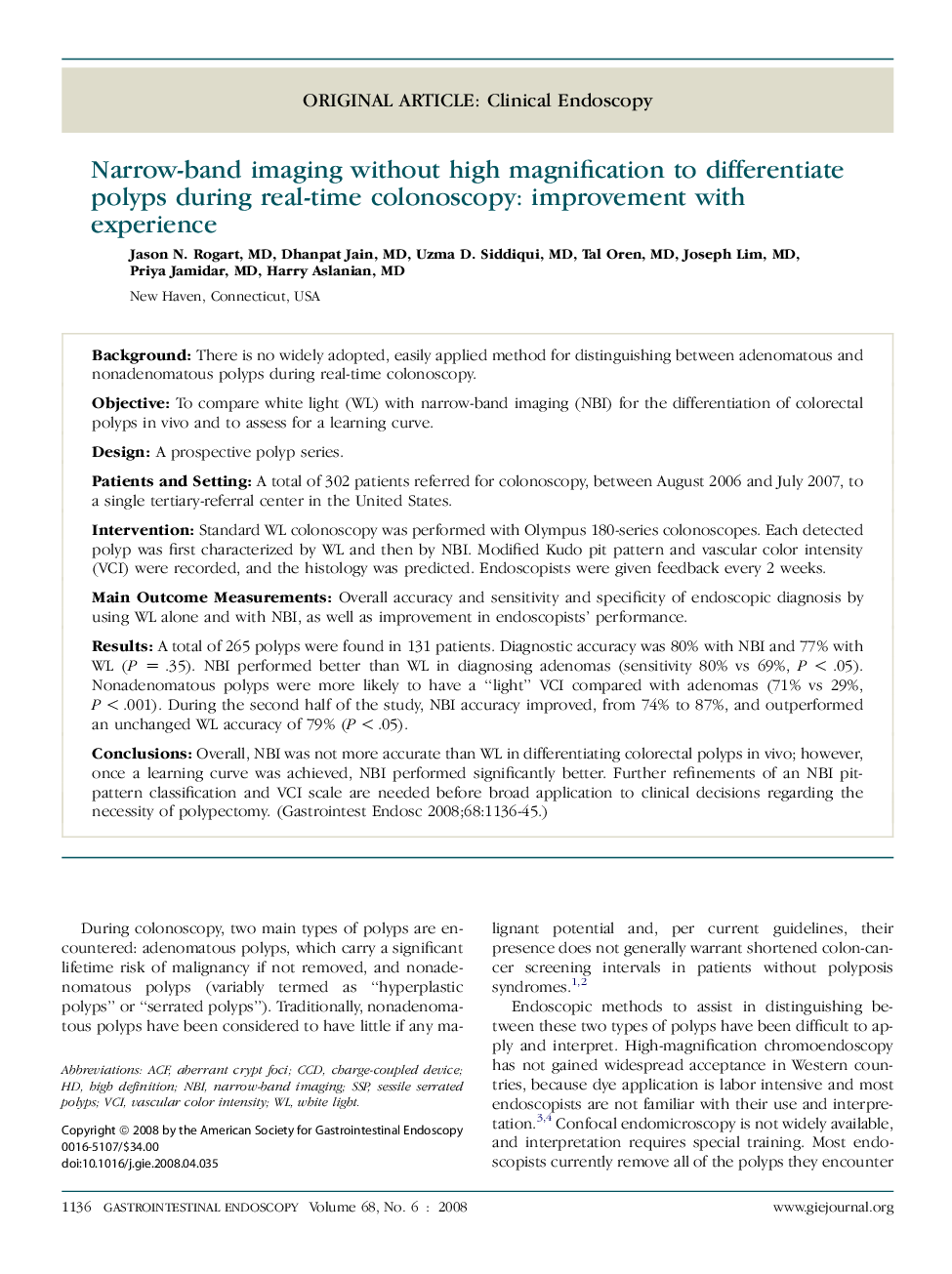| Article ID | Journal | Published Year | Pages | File Type |
|---|---|---|---|---|
| 3308247 | Gastrointestinal Endoscopy | 2008 | 10 Pages |
BackgroundThere is no widely adopted, easily applied method for distinguishing between adenomatous and nonadenomatous polyps during real-time colonoscopy.ObjectiveTo compare white light (WL) with narrow-band imaging (NBI) for the differentiation of colorectal polyps in vivo and to assess for a learning curve.DesignA prospective polyp series.Patients and SettingA total of 302 patients referred for colonoscopy, between August 2006 and July 2007, to a single tertiary-referral center in the United States.InterventionStandard WL colonoscopy was performed with Olympus 180-series colonoscopes. Each detected polyp was first characterized by WL and then by NBI. Modified Kudo pit pattern and vascular color intensity (VCI) were recorded, and the histology was predicted. Endoscopists were given feedback every 2 weeks.Main Outcome MeasurementsOverall accuracy and sensitivity and specificity of endoscopic diagnosis by using WL alone and with NBI, as well as improvement in endoscopists' performance.ResultsA total of 265 polyps were found in 131 patients. Diagnostic accuracy was 80% with NBI and 77% with WL (P = .35). NBI performed better than WL in diagnosing adenomas (sensitivity 80% vs 69%, P < .05). Nonadenomatous polyps were more likely to have a “light” VCI compared with adenomas (71% vs 29%, P < .001). During the second half of the study, NBI accuracy improved, from 74% to 87%, and outperformed an unchanged WL accuracy of 79% (P < .05).ConclusionsOverall, NBI was not more accurate than WL in differentiating colorectal polyps in vivo; however, once a learning curve was achieved, NBI performed significantly better. Further refinements of an NBI pit-pattern classification and VCI scale are needed before broad application to clinical decisions regarding the necessity of polypectomy.
